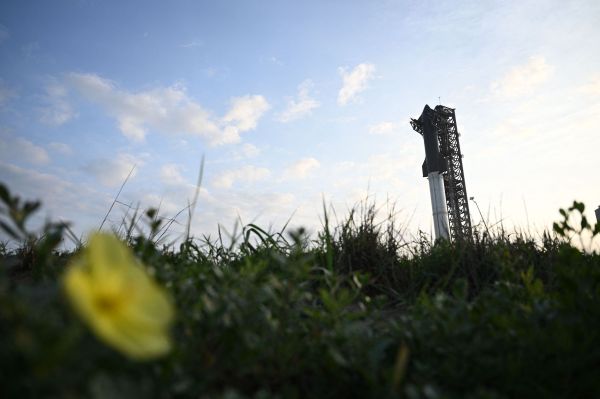Starship’s upcoming test does not have a very high probability of success, according to SpaceX CEO Elon Musk. Last month, he put the chances of success at around 50%; in a Twitter Spaces earlier this week, he seemed to downgrade that probability even further. “If we do launch, I would consider anything that does not result in the destruction of the launch mount itself, the launch pad […] I would consider that to be a win,” he said.
The possibility of another testing anomaly at Starbase is likely not good news for environmental managers, who must oversee SpaceX’s clean-up efforts for any debris that falls on lands under their jurisdiction, like state parks.
Past explosions at Starbase, the company’s testing and launch facility in southeastern Texas, have generated debris fields that have impacted the adjacent Brazos Island State Park and Boca Chica State Park. A test of Starship’s upper stage in March 2021 generated a debris field impacting across 700 acres of surrounding parkland, Shyamal Patel, SpaceX’s senior director of Starship operations, told regulators in a January 2022 email.
The anomaly generated the largest debris field of all the Starship explosions to date, Patel added.
The final piece of debris from SN11 was an approximately 1,500-pound actuator component, Leonardo Alaniz, SpaceX’s manager of environmental, health and safety, reported to regulators in June 2021. The company had to submit a retrieval plan, involving the use of a heavy-duty Case 210 excavator, to the U.S. Fish and Wildlife Service (FWS) and Texas Parks and Wildlife Department (TPWD) before removing it from the site.
The emails between SpaceX and government officials, including those from the FWS, the TPWD and the U.S. Federal Aviation Administration (FAA), were reviewed as part of a Freedom of Information Act request filed by TechCrunch.
Coordinating the debris retrieval due to the SN11 anomaly was “a substantial burden” upon FWS staff time, FWS wildlife refuge manager Sonny Perez said in a June 2021 email to FAA officials.
Part of the source of that burden, it seems, was the short lead times from SpaceX regarding road closures due to Starship vehicle testing. Perez told Alaniz in April 2021 that these closures delayed or prevented response teams accessing the debris site to monitor clean-up efforts.
In one instance, Perez said a short-notice closure resulted in the assistant refuge manager, who was onsite to oversee SN11 debris retrieval efforts, being asked to leave early. The refuge manager and a wildlife biologist were denied access to the site altogether.
Perez did not respond to TechCrunch’s request for comment, but an FWS spokesperson told TechCrunch that a “multi-agency response team” works with SpaceX to respond and assess debris.
Reagan Faught, a park superintendent with TPWD, told TechCrunch that the agency has had to shift its approach in establishing protocols with SpaceX after the company shifted to Starship testing in 2020. “The retrieval of anomaly debris must be done in a delicate manner to avoid further disturbance to the sensitive algal tidal flats, loma habitats, and nesting habitat in the area,” he said. “We have actively worked with SpaceX on how best to perform those retrieval efforts and will continue to improve the retrieval process.”
In the best case scenario, tomorrow’s Starship orbital flight test will generate no debris at all, with the Super Heavy booster and upper stage both making separate ocean splashdowns after launch. But in the Twitter Spaces interview, Musk entreated the public to set their expectations accordingly, adding that to expect success “would be insane.”
The story has been updated to reflect Reagan Faught’s pronouns.
